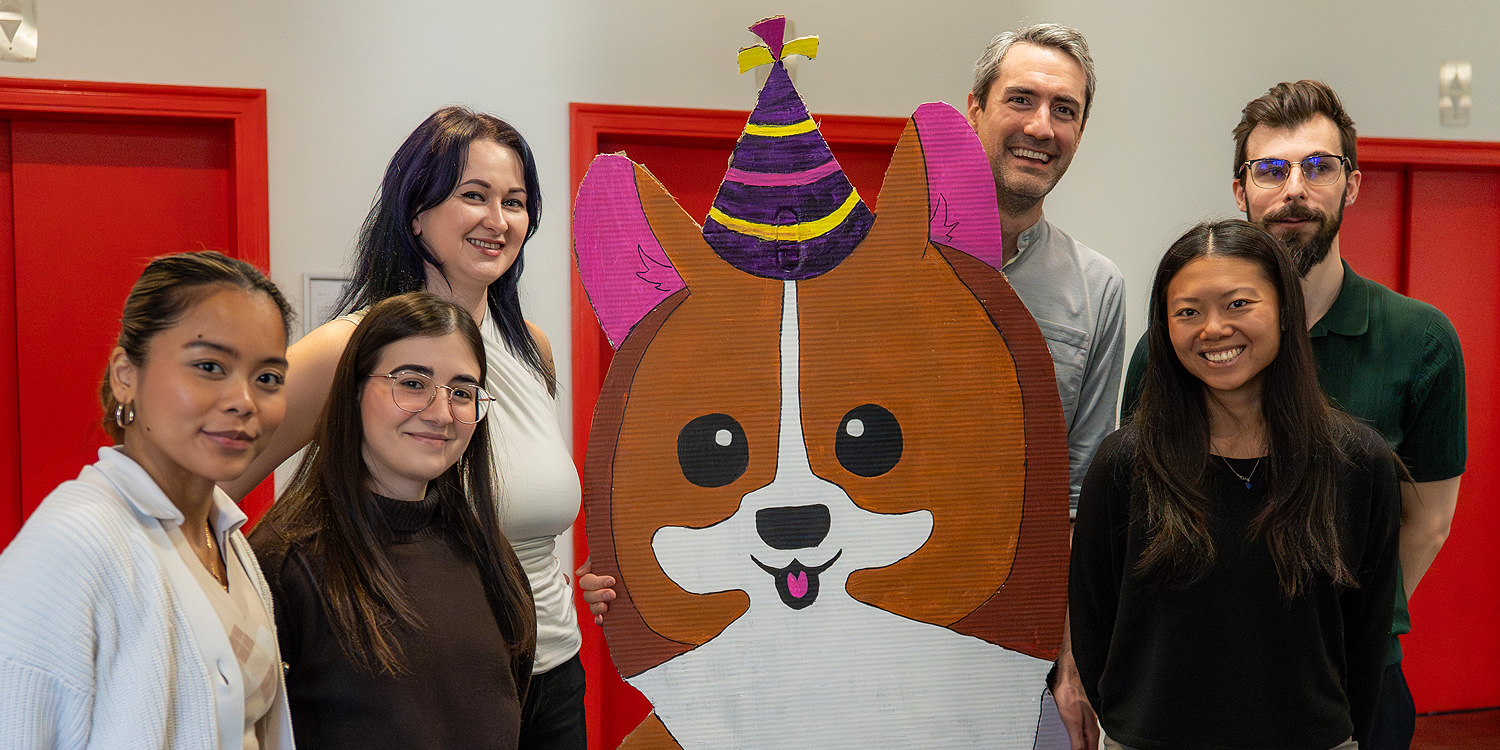Hire Learning: Carbonhound helps companies keep emissions on a short leash
By Steve McCann | March 26, 2025

At the purpose-driven startup, staff enjoy sustainable perks like tree-planting excursions and DIY mending workshops.
Tracking greenhouse gas emissions is pivotal to the climate change fight. In Canada, companies and organizations that generate 10,000 or more tonnes of GHGs annually must report their CO2 data to help the government make cross-sector assessments and determine whether overall emissions are trending downward — a key step in the effort to achieve net zero by 2050.
It makes sense that this eco-accounting benefits the planet, but it can be good for business, too: a 2023 report from Climate Impact Partners noted that Fortune 500 companies that reduced their year-over-year emissions averaged $1 billion more in profits than counterparts that did not shrink their carbon footprint. Another survey conducted by IBM’s Institute for Business Value in 2020 found that 77 percent of respondents listed environmental responsibility as an important factor in their purchasing decisions.
But accurate reporting can be harder than it seems. One 2022 analysis from Boston Consulting Group estimated that only 10 percent of organizations were able to comprehensively assess their emissions. It’s one thing to keep track of Scope 1 GHGs — those directly produced by a company through processes such as manufacturing, facility maintenance and fleet operations. But when you factor in emissions from the energy needed to run a business (Scope 2), and the GHGs produced throughout a supply chain (Scope 3), from sourcing materials to waste disposal, the math gets more complicated.
This confusion became a source of inspiration for Sanders Lazier. “There was a huge gap in terms of an accessible solution for non-experts that’s affordable and easy to use,” he says. Lazier founded Carbonhound in 2021 to address that need. The digital platform allows clients to input what they’re producing, how they’re manufacturing it, where their supplies and energy come from, where their final product goes and how they’re disposing of waste. Carbonhound’s software crunches those numbers into insights on an easy-to-understand dashboard, highlighting areas where there’s room for improvement. Earlier this year, the Toronto-based venture partnered with RBC to provide emissions reporting for companies in the bank’s portfolio.
Here, Lazier talks about the qualities he looks for in a new hire, the importance of a sustainability mindset in driving company culture and the team’s obsession with dogs (and howling).

Co-founder Sanders Lazier
What was the genesis of Carbonhound?
I had this image of my son in 10 years reading about this climate crisis we’re in right now and asking, “Dad, what did you do?” That’s where the idea came from. [GHG reporting] has to be so easy to use that we could automate that work — so that businesses can budget that time for actual reduction efforts and get value from it.
Is your son asking you about climate change now?
At that point, my son was just a glimmer in my eye. He’s now two years old. He’s asking a lot of questions, but most of them are related to food.
What’s the advantage of not taking a DIY approach to emissions reporting?
If the data you’re producing isn’t validated by a third party, those claims have limited weight. You can’t effectively differentiate your product with customers, so you don’t get as much business value.
Does reporting have an effect on your clients’ bottom line?
For every kilogram of CO2, some sort of fuel is being combusted, which has a cost. From a business value perspective, companies that measure their emissions have seen around a 12 percent decrease in costs.
Given the company’s focus, are you sticklers about your own carbon footprint?
All our emissions come from business travel and server costs. So it’s looking at how we can limit the use of LLMs rather than using them to solve every problem we have. It’s being really thoughtful about the technologies we’re using and their impact. Those kinds of decisions will help reduce the operational impact as we scale.

Co-founders Sanders Lazier and Kyri Vanguard are committed to sustainable practices. Even Carbonhound’s team-building activities have an eco-friendly ethos.
Does Carbonhound’s mission influence the company culture?
It starts with the hiring process, because if you don’t hire people who embody your values, it’s really hard to create that culture. We’re trying to find people who are passionate and have a level of critical thinking and a detailed approach to their work that shows they care about the impact of what they’re doing. We tend to value that more than hard skills.
What’s your hybrid policy like?
Four days a week we’re in the office and on Fridays we work from home. We have half days every long weekend — that’s popular. We’ve also got “work from anywhere” weeks throughout the year.
What are the perks of being in the office?
It’s funny — because we’re quite sustainable, people bring their food in often, but we’ll go to Dispatch Coffee across the street. The other week, we went to a retro bowling alley, which was really fun. On Earth Day, we’ll plant trees or clean up the Don Valley. We’re planning to bring in somebody to teach us how to repair clothes, and we’re also talking about doing a clothing swap.
How do you celebrate big wins?
Every Monday morning after our full team meeting — which, of course, is called “kennel time” — we howl together. We recorded the team; now we’ve got this golden button and every time you press it, there’s a symphony of howls to celebrate wins.
The Canadian tech ventures in our roster are always looking for talented new hires. Explore the opportunities available now.
Photo credits: Gab Harpelle, MaRS Discovery District
 Steve McCann
Steve McCann